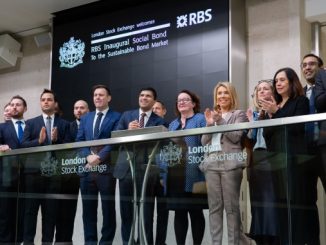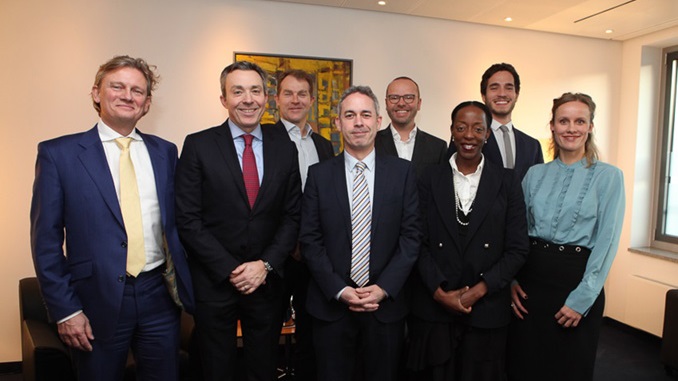
The development of the Social Bond Principles and a focus on the Sustainable Development Goals are among catalysts helping the social bond market grow in the slipstream of green bonds. Pioneering and future issuers and others shared their experiences and expectations with Sustainabonds for this timely roundtable.
The discussion was hosted by DKB in Berlin on 28 November. The participants were (pictured left to right above):
Jörg Huber, head of funding and investor relations, LBBW
Ralf Berninger, head of investor relations, SFIL
Joop Hessels, head of green, social and sustainability bonds, ABN AMRO
Neil Day, moderator and managing editor, Sustainabonds & The Covered Bond Report
Armin Hermann, head of treasury, Deutsche Kreditbank (DKB)
Esohe Denise Odaro, director, Green & Social Bond Principles Secretariat, ICMA
Damaso Zagaglia, consultant, ISS-oekom
Johanna Dichtl, sustainability manager, MünchenerHyp
You can also download a pdf of the roundtable by clicking here.
Neil Day, Sustainabonds: What is prompting the growth in social bond issuance?
Denise Odaro, ICMA: My view is that social bonds are gaining a foothold because of the growing interest in ESG implementation at corporate level arising from stakeholder requests to incorporate sustainability across entire supply chains. Consequently, there is increasing demand for sustainable capital markets products as a means to align investments and funding to this new standard, which is already being applied in operations. This momentum correlates with a heightened global awareness of sustainability issues generally, aided by the emergence of climate change on the political agenda and the prominence of the Sustainable Development Goals (SDGs). Bringing it home to the capital markets, there is now more interest in fixed income for ESG. It had previously been mainly an equity play.
Looking back a few years, whilst there were some bond products that could be deemed ESG, the growth of social bonds did not really kick off until about two years ago. IFFIm’s vaccine bonds, which date back to 2006, meet the definition of social bonds and subsequently the EYE Bond issued by IADB in 2014 was the first of the kind in this current epoch of ESG bonds, but it was not until 2015 that the first branded “social bond” was issued by ICO in euros and in 2017 the first US dollar benchmark social bond came to market, issued by IFC. The first corporate social bond was issued only earlier this year by Danone. Evidently, it is still a very nascent product.
A key thing to note here is the correlation of volume with the publication of the Social Bond Principles. The Social Bond Guidelines were initially published in 2016, after which we have seen a surge in issuance and some diversity in issuer type. This is because issuers and underwriters now have a framework with which to structure social bonds. Additionally, investors can use this adherence to the framework as a filter for investments. This year we have seen about $11bn (EUR9.7bn) of issuance, up from $9.7bn in 2017 and $2.2bn in 2016.
Day, Sustainabonds: Johanna, 2014 was when MünchenerHyp did its ESG Pfandbrief, the first covered bond in this area. How would you see that fitting in with the sector’s development? And what was it that drove you to move early?
Johanna Dichtl, MünchenerHyp: When we first thought about issuing something sustainable we didn’t really know what the focus would be, so we called it “ESG” because we wanted to have a holistic approach to sustainability, and in the end the market labelled our first ESG issue, with housing cooperatives behind it, more as a social bond.
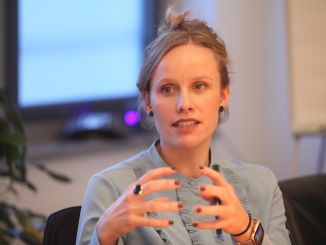 We had many reasons to do it. Basically, it was an investment into the future. It fit very well with our business model as a cooperative bank, a low risk, long term, strategically-thinking bank. And we felt there was momentum for it. The market responded very well, so it was a good experience for us in respect of the investor base, demand for the ESG Pfandbrief, and resonance in the media.
We had many reasons to do it. Basically, it was an investment into the future. It fit very well with our business model as a cooperative bank, a low risk, long term, strategically-thinking bank. And we felt there was momentum for it. The market responded very well, so it was a good experience for us in respect of the investor base, demand for the ESG Pfandbrief, and resonance in the media.
We were a very early mover and the market has indeed evolved since then, and now we see many strands. The focus is more on green at the moment, I think, but social is gaining momentum as well.
Joop Hessels, ABN AMRO: The movement has always been wider than only green. Right from the earliest issues, we’ve seen more an ESG type of approach. But it was very difficult to put a good definition behind it, so especially in the first stages every issuer developed their own naming convention, their own approach, which was very close to their own organisation. With ICMA then coming up with the Green Bond Principles and later the Social Bond Principles and the Sustainability Bond Guidelines, you had a good way of defining those different elements. So looking back you can now more or less put the issuance in buckets, but it has always been there.
With the Paris Agreement there was a sudden clear focus on green. But the social bond market and sustainability bond market is growing, judging by the appetite I hear from issuers. And the Action Plan on Sustainable Finance is wider than just environmental – social is a key element – and if the EU is behind these developments that’s absolutely helpful.
It’s a bit more difficult in some cases to earmark projects on the social side, and to think about impact reporting. But it’s a growing market and with issuers now having their experience on the green side, they see that they can adapt their methodologies to their social investments. So I think this is the next big step for the ESG market.
Day, Sustainabonds: Damaso, I imagine that the broader ESG side was something that ISS-oekom would have been more familiar with even before green bonds took off. How do you see things developing?
Damaso Zagaglia, ISS-oekom: Indeed, ISS-oekom research was mainly specialised on the ESG rating of companies, and that has continued as the backbone of our green bond services, too. We consider that when doing green bonds, it is not only about the projects themselves – we always look at the issuer, something we have been expert in for many years. When we did our first second party opinion for a green bond in 2014 that was one of the focuses and we still only accept certain types of issuers, those involved in sustainable activities.
When we look at what is driving the social bond market, it is really leveraging off the growth of the green bond market and the ICMA Social Bond Principles. Investors have understood that, just as there was opportunity in the green bond market, there is in the social aspect as well. Another factor that has helped foster the social bond market is the SDGs. That is another step that made it easier for issuers and investors to pinpoint the objectives and eligibility criteria, which is not that easy when you are issuing a social bond. With a green bond, for example, you have to look at energy efficiency or carbon emissions – it’s widely recognised and quite easy to calculate. But for a social bond the criteria are a bit more abstract, and I understand from issuers that constructing your asset pool is therefore harder.
Day, Sustainabonds: Do you get a sense that there is quite a pipeline of issuers who will be launching new projects?
Zagaglia, ISS-oekom: Absolutely. There is one category I would highlight, which is buildings. Private mortgages have been used more on the green side, on the energy efficiency side. However, if we look at BayernLabo, for example – which was one of the first social bonds that we analysed – they had private mortgages in their assets, but looked more at socio-economic indicators. It is the same types of projects, but if you identify different selection criteria you can then tailor it towards either a green or a social approach. Many issuers active in the green buildings and private mortgages area could tailor their green bond approach to social bonds, and I expect this to happen more in the future.
Armin Hermann, DKB: This is a very important point because you can have these different perspectives when looking at assets. We also started with a green bond project and then headed to the social bond market.
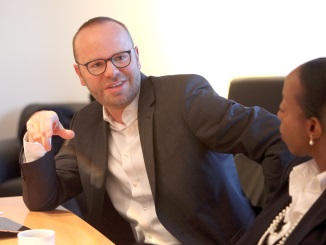 But it is also very important that we have ICMA’s Social Bond Principles because both investors and issuers can now really easily identify the different categories. And I think it makes a lot of sense not to mix things up, even if you have assets that can be looked at from the green bond point of view or the social bond perspective – this is one of the lessons of our projects. If you don’t strictly divide things between the social bond and green bond projects, investors will ask: Is it social? Is it green? Or is it mixed? It is very good to have a clear approach – so we have these principles that can offer a clear view on the different types of projects.
But it is also very important that we have ICMA’s Social Bond Principles because both investors and issuers can now really easily identify the different categories. And I think it makes a lot of sense not to mix things up, even if you have assets that can be looked at from the green bond point of view or the social bond perspective – this is one of the lessons of our projects. If you don’t strictly divide things between the social bond and green bond projects, investors will ask: Is it social? Is it green? Or is it mixed? It is very good to have a clear approach – so we have these principles that can offer a clear view on the different types of projects.
Dichtl, MünchenerHyp: That was our experience as well. We really got the feedback from investors, please do not put everything together because we have either a green mandate or a social mandate, but we cannot really deal with all of it in one thing.
Odaro, ICMA: If we take a step back and look again at how the ESG bond market began, we have to acknowledge that it was investor-led. Now, looking at the social bond today through that lens, investors are asking for liquidity. We are at the point where product diversity besides green bonds is needed given the sheer number of investors who now have a mandate for wider ESG in their portfolios. Take GPIF, for example, the largest pension fund in the world with $1.3 trillion assets under management. In 2017, GPIF announced plans to raise its equity portfolio allocation to socially responsible investments from 3% to 10% and in tandem they made public their intention to replicate ESG implementation in their fixed income portfolio. Due diligence for this was done by collaborating with the World Bank Group to unearth a strategy and a report was published to that end. One of the findings was the lack of ESG products as a hindrance. The volume and diversity required by such a large investor doesn’t quite exist at the moment in the bond market. So, the development of large-sized social and sustainability bonds is needed to meet the appetite of such large-scale investors who are asking for ESG products in fixed income.
Green bonds just marked its 10 year anniversary of the first issuance; however, the first ever benchmark green bond was IFC’s 2013 trade, seven years later. Given what we have achieved in the social bond market in terms of volume and supporting infrastructure since the inaugural bond, we have experienced much quicker progress than was seen with green bonds. As Damaso said, one thing that has been identified that could help further is using the SDGs as a basis for indicators.
It is worth noting there is a huge benefit of launching a social bond programme vis-à-vis having numerous ESG themes, besides green, which is an established class, and that is that an issuer can house a number of different eligible use-of-proceeds under one programme and, as such, create a programme backed with a viable pipeline. Every potential issuer most likely considers: should I start a programme and then only have one issue a year or one every five years because of a narrow use of proceeds? The social bond, with its breadth of varied eligible projects, facilitates a frequent issuance programme, and a sustainability bond, even more so. Having one programme simplifies issuance and reporting operations. Investors, on the other hand, may want greater product diversity for their portfolios but larger issuance sizes under one type of product also to provide much-needed liquidity.
Day, Sustainabonds: Ralf, SFIL/Caffil published a social bond framework in the summer. How did this develop? And how does it fit in with other French initiatives in sustainable finance?
Ralf Berninger, SFIL: As a local government financing agency, we are looking at both green and social bonds. We set up the social bond framework first and we’ll be focusing on public hospitals. One of the feedbacks we had from investors was that they prefer a product where it’s pretty clear what you are financing, so they didn’t want us to mix up too many different assets. We are also working on a green bond framework, which we will probably publish next year, and our experience was very similar to what Armin mentioned – a lot of the things we are financing are both green and social. When we finance a school, it’s going to have a social objective, but it’s also going to be a green building. Or when we finance clean public transportation, very often we’ve got social objectives with that as well. For this reason we thought about going for a sustainable framework, where you basically put green and social assets together, but it’s an idea we abandoned when a lot of investors told us that they prefer a really clear definition and clear reporting where you have just one particular class of assets.
A key point about French government initiatives and their impact on us is that France was one of the first sovereign issuers to for a green government bond. We have also seen a lot of French agencies very active in the green bond market. But what’s much more important is that with French laws for asset managers you have a very strong framework that makes them disclose how they are applying ESG criteria, and asset managers’ reaction was not to see this as a burden, but really more as an opportunity. The large French asset managers have a very strong position in ESG investing, and that is really one of the key reasons why this is an attractive market for us.
Day, Sustainabonds: Jörg, LBBW has issued green bonds and I understand is now working on a social bond programme.
Jörg Huber, LBBW: Yes, the social bond project is the next step. We have seen as an issuer, but also as a market participant in a broader sense, that the demand for green bonds is currently of course much larger than that for social bonds. But for the past two to three years the social bond market has started to grow and demand there will also increase. Also we have seen that we have sufficient assets for this segment.
 Getting the structuring right is, however, much more complicated than with green bonds. For probably all issuers going down the green bond route, singling out the assets to put in your green portfolio and internally managing reporting on these assets is something that has to be tackled. This is easier for green bonds than for social bonds, but you still have to do it. Current bank systems just don’t have the necessary information, so in the beginning there’s a lot of manual work and it takes time to get the systems in place to make this easier.
Getting the structuring right is, however, much more complicated than with green bonds. For probably all issuers going down the green bond route, singling out the assets to put in your green portfolio and internally managing reporting on these assets is something that has to be tackled. This is easier for green bonds than for social bonds, but you still have to do it. Current bank systems just don’t have the necessary information, so in the beginning there’s a lot of manual work and it takes time to get the systems in place to make this easier.
When deciding to issue green and also social bonds, we saw that we had a lot of assets on our balance sheet that fitted these, but another part of the discussion was that going forward this also would make sense from a regulatory point of view. As Ralf mentioned, French investors are already obliged to move in this direction, and it is becoming more and more common for investors across Europe to increase their investments in these areas. We therefore want to be prepared to meet this demand and offer our traditional investors these kinds of products.
Day, Sustainabonds: Can you say much about what the assets might be for your social framework?
Huber, LBBW: Well, we are setting the framework up at the moment and we hope we will be able to finish that by the end of the year to be prepared for issuance next year. At the moment, a large part of the assets are in the health industry and similar sectors. We are working on defining this, so that we have sufficient volumes and enough granularity, and also the necessary data.
We also thought about buildings that have social aspects, but at the moment it looks easier and better to put these types of assets into green bonds if we have them and they fit. If you finance buildings, of course, you can put them in both, but you cannot use them for both at the same time.
Hermann, DKB: A big advantage with buildings is that you can also put them into a cover pool. This is one of the reasons why we built up a social bond framework where we can issue both senior unsecured and covered bonds. That makes a lot of sense, especially in our case where we also have lots of public sector business, and our first social transaction was a public sector Pfandbrief.
We had a similar experience with the social bond programme, and especially about impact reporting. This is a big discussion in social bonds, that you have the data somewhere, maybe written in some documents in a folder, but you have to transfer it into reporting.
And in the green bond area, especially when you look at renewable energy where we are active and also issued our green bonds from, the impact data you need – the nominal capacity, the output and so on – is also crucial for the performance of the project cashflow, so it is already in your systems. If you run a hospital, it’s important how many beds you have and how many rooms you have, and what quality standards are in place, and I’m sure everyone is looking at it when granting a loan to a hospital, but you don’t necessarily store it in your systems. This is where the two megatrends of digitisation and sustainability come together.
Since we issued this year, this is something that we have been working on for our impact reporting next year. We came up with our approach and when we showed it to investors, they liked it. But I’m sure there will be strong developments in pulling socio-economic indicators together for reporting on social bonds.
Odaro, ICMA: It’s a very good point you raise, because I do believe that some of the information required for impact reporting probably exists in the due diligence package for credit or loan assessments. For example, the number of beneficiaries for a project, such as how many more patients will be treated in a hospital following a proposed investment or loan etc. So it’s a question of extracting that data, which is at the moment perhaps not used in the same manner.
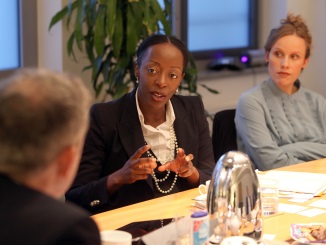 The framework for impact reporting for social bonds which we published this year was drafted more so for corporates and commercial banks whose issuance we need to encourage for this market is to grow. So that document is much more accessible and beneficial to corporates than the harmonised framework for green bond impact reporting, which was development bank-led.
The framework for impact reporting for social bonds which we published this year was drafted more so for corporates and commercial banks whose issuance we need to encourage for this market is to grow. So that document is much more accessible and beneficial to corporates than the harmonised framework for green bond impact reporting, which was development bank-led.
Hermann, DKB: There are also some indicators we had never heard about that we can use for our reporting within the social bond environment.
When we are talking about why we are issuing a social bond, it also brings together the capital markets activities and the sourcing activities and the origination of loans within the business, so it’s very helpful from an internal perspective in motivating people and showing them how important their assets are – not just from the normal interest rate perspective or growth in the loan book and so on, but also from a capital markets perspective. This really was a catalyst internally for the whole sustainability thing.
Day, Sustainabonds: At MünchenerHyp you offer discounts on green mortgages and also social-type mortgages you call a Family Loan. It could be argued that the discount on a green mortgage is justified by it being lower risk – is there any similar argument for why you would offer a discount on a social mortgage?
Dichtl, MünchenerHyp: Before we invented the Family Loan we looked at our loan portfolio and did an analysis comparing families with incomes up to a certain threshold with normal customers, and we found that these families really were a little lower risk. Our explanation was that people who don’t typically have so much money available probably know how to better deal with the situation, and especially if they live in the real estate themselves, they would probably rather sell their car than their house.
But it wasn’t the reason why we offered the same kind of feature as in the green loan. Really we saw it as an investment into the future, strengthening our perception by embedding sustainability into our core business. We use it for a cover pool for both ecological or social Pfandbriefe, so there was a strong motivation behind it.
But I think most of what we have discussed here so far comes down to the same question, which is: What is social? And how can you translate the notion of social into some measurable KPIs, thresholds, or whatever. We translated it into our cooperative housing story, affordable housing, and the metric was families and intergenerational prosperity against the backdrop of demographic change. But still we see a lot of difficulties when looking at impact reporting – do the KPIs really cover all the aspects that are actually behind it? I don’t think so. We’ll probably never really achieve that. I think we really have to be aware of the fact that when looking at sustainability, there’s always some dimensions left out – you probably cannot make everything measurable.
Day, Sustainabonds: I would imagine, Damaso, you are faced with different issuers coming to you with all sorts of ideas and different sorts of assets. Are you able to accept all of the ideas that are put to you?
Zagaglia, ISS-oekom: Sometimes when issuers approach us they really want to focus on the social side, forgetting about the green side, but for us they are really interlinked. When we create our indicators, even if it’s a social bond with some social indicators, we try not to forget about the green part. So for housing cooperatives, for example, the treatment of disadvantaged customers or rent levels lower than the market will be relevant, but we’ll also look at the energy efficiency of the housing, not forgetting the building materials or water usage, which come from our green KPIs. Now I understand that has sometimes created a bit of confusion – we had this discussion with DKB – but as an ESG rating agency, we really wanted to have all the aspects included in the analysis. I nevertheless understand that on the investor side they really do want to consider only one type of indicator, so it’s a question of coordinating these two aspects into a product that has value.
Hessels, ABN AMRO: When it comes to social bonds, some aspects area a little easier to explain to investors than others. If you have health-related investments, for example, then it’s all about the target population, which is indicated in the Social Bond Principles, so for a hospital it’s all the people who are ill. But the target population discussion can still be the most tricky part for issuers. Where do you draw the line, especially for something like housing? There is an example for this in the Social Bond Principles, and that’s those below poverty line. But if you compare different countries there are huge differences: what is below average in Germany might be even a very good salary in other countries.
 There is a lot of discussion about this that makes issuers cautious – they want to do the right thing; they don’t want to propose a social bond and then have a lot of debate about why it should count as social. So far we’ve seen several issuers look at social housing legislation as a reference point. I think it could also be interesting for issuers to look at the distribution of incomes within their own portfolios as an alternative. Naturally there will be changes, if people get a job or a better job, so then you may need to take such loans out of the pool. Furthermore, if you are below the poverty line, you probably won’t get a mortgage. We have therefore seen other institutions, like BayernLabo, with alternative sources for loans or going more to the rental housing part.
There is a lot of discussion about this that makes issuers cautious – they want to do the right thing; they don’t want to propose a social bond and then have a lot of debate about why it should count as social. So far we’ve seen several issuers look at social housing legislation as a reference point. I think it could also be interesting for issuers to look at the distribution of incomes within their own portfolios as an alternative. Naturally there will be changes, if people get a job or a better job, so then you may need to take such loans out of the pool. Furthermore, if you are below the poverty line, you probably won’t get a mortgage. We have therefore seen other institutions, like BayernLabo, with alternative sources for loans or going more to the rental housing part.
Hermann, DKB: We also had this discussion on target population and also on additionality because we are only active in Germany. But in the end the investor will decide and it’s the transparency that’s important. It’s the same on the green bond side regarding nuclear power, for example, or hydro dams with the conflicts of goals and targets you can have. In Germany we are having this big discussion about coal at the moment: on the one hand you provide employment and on the other you have nature, so it’s not an easy discussion and everyone has their own position. In the social bond market you also don’t have this one number like CO2 avoidance, so you have to give lots of information to the investor, and in the case of 10 investors, you get 10 different discussions. And if portfolio managers are able to invest worldwide and come from the additionality point of view, a school in Germany might not be as useful as a school in Ethiopia. There are these different positions, and in the end the investors will decide upon their preferences.
Denise mentioned that social bonds are miles ahead of where green bonds were in their early days – this is also miles ahead of normal corporate funding. The progress that has been made in social bonds in this respect in recent years is quite impressive.
Odaro, ICMA: The Social Bond Guidelines were drafted as a relatively short document in 2016 and an accompanying document to the Green Bond Principles; however, the following year we enhanced it to a stand-alone full document. This year, the document was refined further and the key takeaways from the latest version of the SBP should make it easier for issuers to determine social projects and eligible beneficiaries. These include the expanded definition of target populations, which vary depending on local contexts, like you rightly said. Arguably, there are social needs in every geographic region from developed to developing nations. Coming back to the SDGs, even though they weren’t written for the capital markets, they’re the most accessible blueprint for social needs globally available and were written by 190 countries, reflecting agreement that these 17 social development goals are aspirational globally, albeit at various levels. So, again, looking at the target population in a local context should be quite acceptable practice. In addition, a target population may be served by addressing the general population in some cases.
Another update was to the definition of examples of target populations which contained the “underserved”. We have included wording to explain that this means those who lack quality access to services. So, while you may have access to a service, for example, if you only have access to electricity one day a week as opposed to every day, that is an issue – wherever in the world you live.
Again, the idea was to look at this from a lens that applies to all types of institutions, including of course corporates. It is important to note that social needs are not only addressed through development bank or public sector projects.
Hessels, ABN AMRO: I completely agree. That’s the approach more and more issuers are now taking. That had indeed typically been the discussion: we are not the IFC, we are not the World Bank, we are not tackling world poverty – we have a specific focus and in that area we are taking this or that approach. And I agree with Armin, the story behind it is very important. Even if incomes might be relatively high in a city like Munich, most people are crowded out of the city centre because of the increasing house prices, and it’s good that there’s an institution that provides relatively cheap housing so that there will be a good mixture in cities. This approach has been well received by investors.
Berninger, SFIL: Speaking to investors on reporting indicators for our social bond framework, one key thing they are looking for is harmonisation. They buy social bonds from different issuers who have their own reporting indicators and they clearly expect issuers to align with what is being done by others, so there is the same output for each and every social bond that finances the same assets. In the end help this should help us move to a much more harmonised market.
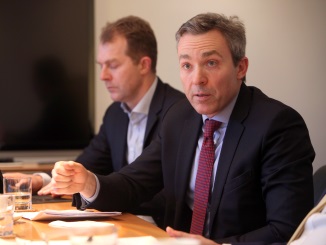 On our side, we are looking at public hospitals and it’s very difficult to measure health and well-being. When you look at many social indicators you also often have a very big time lag, so if you finance something the data you have might date back a few years, so we are very happy to have the ICMA guidelines that came out this summer. What we believe is that it is important to go for reporting that provides the number of beneficiaries, and for many other things that we are financing, we believe that often the best way is to put together case studies as well with the reporting, where you show concrete projects that you are financing.
On our side, we are looking at public hospitals and it’s very difficult to measure health and well-being. When you look at many social indicators you also often have a very big time lag, so if you finance something the data you have might date back a few years, so we are very happy to have the ICMA guidelines that came out this summer. What we believe is that it is important to go for reporting that provides the number of beneficiaries, and for many other things that we are financing, we believe that often the best way is to put together case studies as well with the reporting, where you show concrete projects that you are financing.
Odaro, ICMA: And investors want to see that. Going on roadshows, as you said, one finds that these products may make up maybe smaller percentage of an annual funding programme disproportionate to the amount of time spent talking about it, because investors are quite interested in these products and the use of proceeds. So, one of the advantages of these products for an issuer is a more active dialogue and relationship with investors.
Hessels, ABN AMRO: Most investors I’ve spoken to are currently very happy to have more outcome-based reporting, because the social impact is really, really difficult to measure. Governments spend fortunes on trying to evaluate the impact of their policies, especially in the provision of health services – obviously you hope that everybody will get better, but it’s unfortunately not always the case. It’s then more a question of having access to the services, and then it’s more about outcome – how many people you provide access to these kind of services. So I think for the time being from an investor perspective that’s more than sufficient.
Huber, LBBW: For our green bond, the impact reporting is about two pages, and you cannot do that with a social bond – it’s much more granular. Already when you are establishing the pool you have to consider to what extent you will be able to make that reporting annually and get the data without too much effort, because you can’t really employ another 10 people just to do this kind of work. As everybody knows, you don’t have a pricing benefit with a green bond or with a social bond – yet, that might change at some point in time – so you therefore need to set it up in a way where the process is as lean and efficient as possible, but which delivers enough transparency to investors that they can accept it and would like to buy the issue.
Day, Sustainabonds: You brought up the issue of pricing and it’s impossible to not at least touch on this. There’s been a lot of debate about greeniums and whatever their social equivalent might be called – you sound sceptical about there being any significant pricing differential.
Huber, LBBW: It’s not scepticism; it’s just being really realistic about it. I haven’t talked with anybody in the market who says, yes, I will get a pricing advantage. And that should be clear to everybody. There might at some point in time be the effect that when more and more green and social bonds are issued, brown bonds have to pay a premium. But that is still some time in the future. So for the time being you are relying on the assessment that you are putting together new products that can enlarge your investor base, and where you will get a kind of completely new dialogue that will help you improve your structuring and transparency – we have already seen that with the green bonds, but it will also happen with the social bonds.
Hermann, DKB: Having these learning effects is a big advantage, because we will have transparency regulations coming out of the European Commission’s Action Plan – that’s for sure. While I agree that no investor pays you for the work we are doing on green and social bond reporting at the moment, these efforts will help in the coming years in gathering data for the market but also for the regulator. Furthermore, in doing this reporting now you can act as a pioneer and therefore be an example for when the regulation is being developed.
You do have to get commitment from management for issuing green and social bonds, but while it would be nice to tell the CFO that a greenium will save X euros per year, it is not the case. It is nevertheless definitely a door opener – on both the green and social sides we also had the experience that we reached a certain share of new investors.
Huber, LBBW: And the whole institution starts to learn about it, too. Of course the process is started by treasury with the go-ahead from management, but you have to get a lot of areas in the bank involved in the overall process. That means people focus on it, not necessarily just about putting the green bond or social bond process in place, but also making the institution more aware of these aspects. And in future there will be different regulations banks have to pay attention to on the lending side: what social or green characteristics loans have, what impact that has on their treatment, reporting, etc.
At LBBW, we have already been producing our sustainability report for quite some time, not just for one or two years, and now it is 160 pages – almost as thick as the annual report! And the details there are becoming much more beneficial for the bank. If you were to start that process now, you would be well behind, but we are already some steps ahead. That also helps in the process of establishing these programmes, and the whole bank as it is involved will certainly learn by that, and be much further ahead in the learning curve.
Day, Sustainabonds: Damaso, do you see any correlation or virtuous circle with issuers who are doing social bonds, whereby there is some feed-through benefit to their overall issuer score, or does it tend to be the institutions who are perhaps good on the issuer score anyway who are doing social bonds?
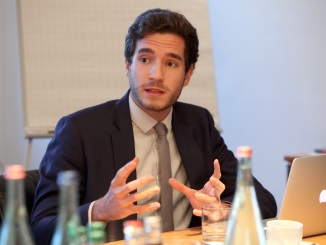 Zagaglia, ISS-oekom: It’s an interesting question. Another question I sometimes ask myself is, could you have a bad social issuer, in the sense that the issuer itself is badly involved in social issues but issues a social bond? That’s something we’ve seen in the green bond market. We’ve had issuers who weren’t Prime in our ESG scoring but wanted to move towards it, and in that case we look into their long term strategy to see if there is any kind of radical change foreseen, and in that case there are some types of project that we could accept. On the social side, it is a bit more difficult to envisage. I haven’t been faced with this issue yet, but it is worth considering how we would assess an issuer that does not have a good governance or social track record but wants to shift into social projects.
Zagaglia, ISS-oekom: It’s an interesting question. Another question I sometimes ask myself is, could you have a bad social issuer, in the sense that the issuer itself is badly involved in social issues but issues a social bond? That’s something we’ve seen in the green bond market. We’ve had issuers who weren’t Prime in our ESG scoring but wanted to move towards it, and in that case we look into their long term strategy to see if there is any kind of radical change foreseen, and in that case there are some types of project that we could accept. On the social side, it is a bit more difficult to envisage. I haven’t been faced with this issue yet, but it is worth considering how we would assess an issuer that does not have a good governance or social track record but wants to shift into social projects.
Odaro, ICMA: That’s a great question, which we have also discussed. One analogy was, could a tobacco company, for example, issue a social bond if the use of proceeds were going to, say, lung cancer research? How would you consider that?
Zagaglia, ISS-oekom: Being traditionally dark green and I would say dark social, we would at this point be quite sceptical about accepting that kind of issuer. Again, I do think the issuer part of a bond issuance is really important, and it should keep on playing an important role – even though the market is shifting a bit. The second party opinion business is booming right now and some of our competitors have been granting SPOs to issuers from Latin America or Asia even when issuers sometimes don’t really have strong social records. So we’ll have to see how it evolves as the social bond market grows.
Day, Sustainabonds: What are your predictions, expectations, hopes for the year ahead?
Hessels, ABN AMRO: Most investors have put their feet under the table in the area of green bond funds, focusing on the environmental part, and what we now need to see is them also spending time setting up similar funds for social bonds. That will be the big next step for the future.
Berninger, SFIL: We take it as given that we will be issuing our social bond next year and also coming to the green bond market.
If I had a hope for the whole social bond market it would be that we see something similar to the green OAT in the social bond market. That was a huge benchmark transaction which really took the market to a new level. If we were to see something similar in the social bond market, a really huge transaction, much bigger than what we have seen so far, then this would really boost the market and bring in other issuers.
Huber, LBBW: The EU is working on a taxonomy, standards and labels for these kinds of instruments, and we hope that this process, which a lot of market participants are involved in, will be quite clear and transparent, but also that regulation doesn’t take over too much and put us in a framework which is then really difficult to manoeuvre in.
Hermann, DKB: I agree with that point, and in addition I think that both green and social bond markets can see these upcoming regulation as a chance and not as a threat, because in the end it will help us all to develop not only the market, but also business models, especially financial institutions – and this is one of my wishes for the future. But even if social bonds will stay a niche, we will be active in them because it really is our business model reflected on the liability side.
Odaro, ICMA: My wish-list would include peripheral necessities that would promote liquidity of social bonds, such as social bond indices. Also, some sovereign issuance would certainly bring a boost to the market in terms of establishing a benchmark and providing liquidity, as well as expanding diversity of issuers.
More diversity of issuers would certainly bolster the market, bringing more corporates into the space and sovereign issuers. It may be a chicken or egg situation here, but perhaps having more investors put a stake in the ground and declare dedicated portfolios for social bonds would spur such issuance by convincing reluctant issuers of the demand.
Zagaglia, ISS-oekom: My one is very similar to yours, in the sense of diversity of issuers. The green bond market was initially dominated by supranationals, and then banks. Corporates do now play an important role – even though they often issue in small quantities, they add an energy to the market, and the social bond market is still lacking that energy. So I see an important role for them going forward.
Dichtl, MünchenerHyp: My wish for sustainable finance as a whole is at a more abstract level: that we do not lose sight of what the overall topic is about, and that the growth of the social bond market may contribute to really focussing on sustainability instead of only green or only social, because in the end they are interconnected. Climate change was caused by mankind, but it also has massive social effects on mankind, so you cannot separate them from one another – that may be investors’ wish, but we shouldn’t lose sight of the big picture.


